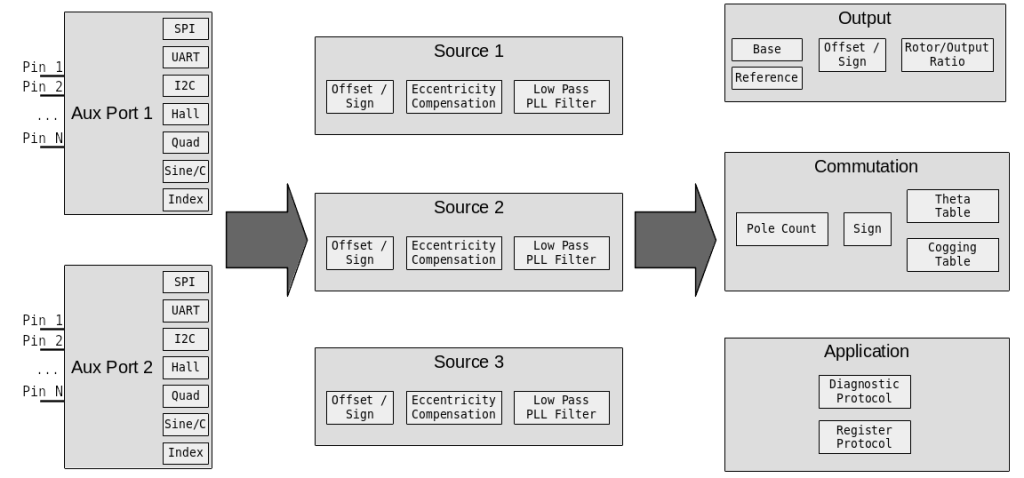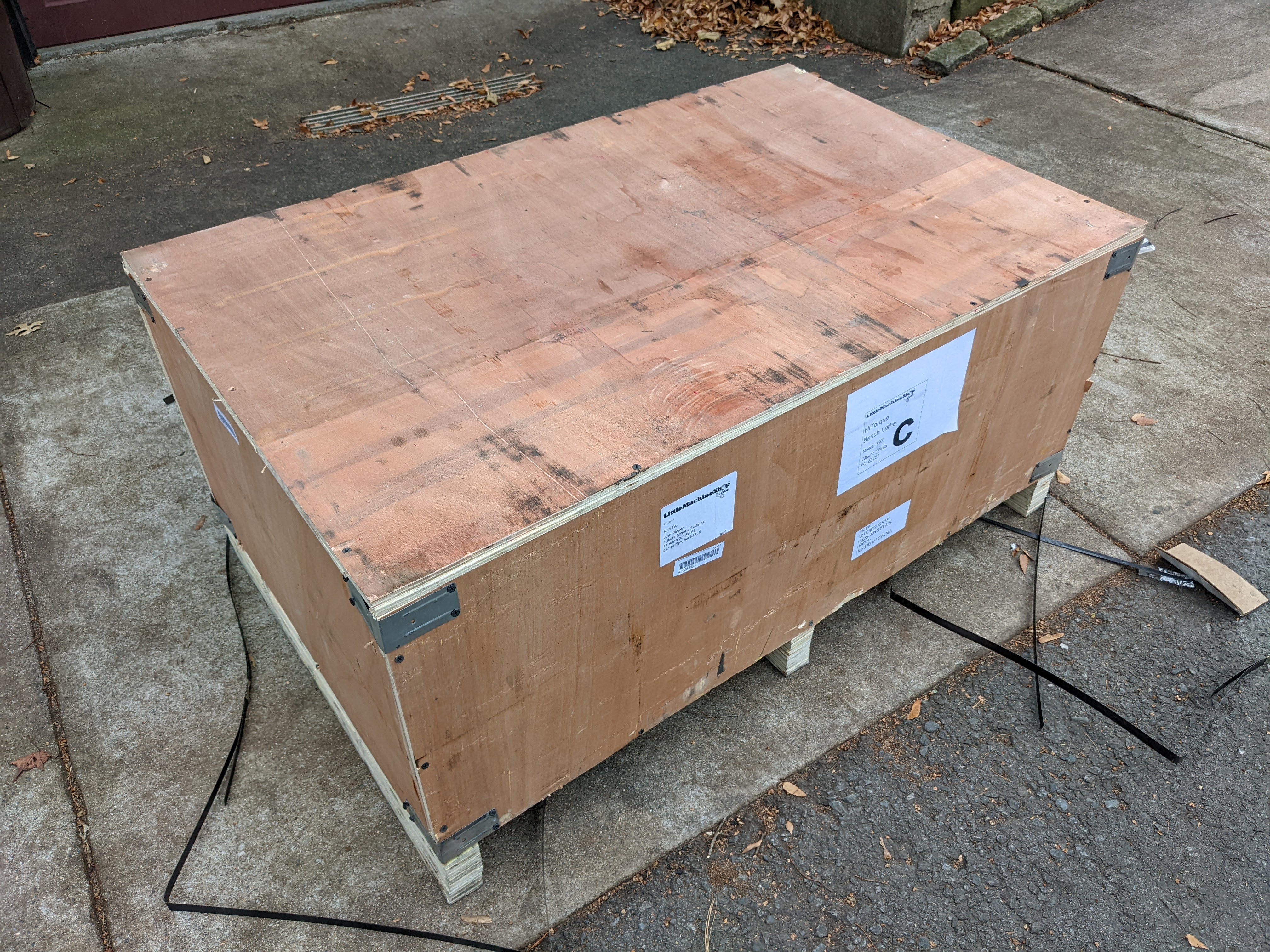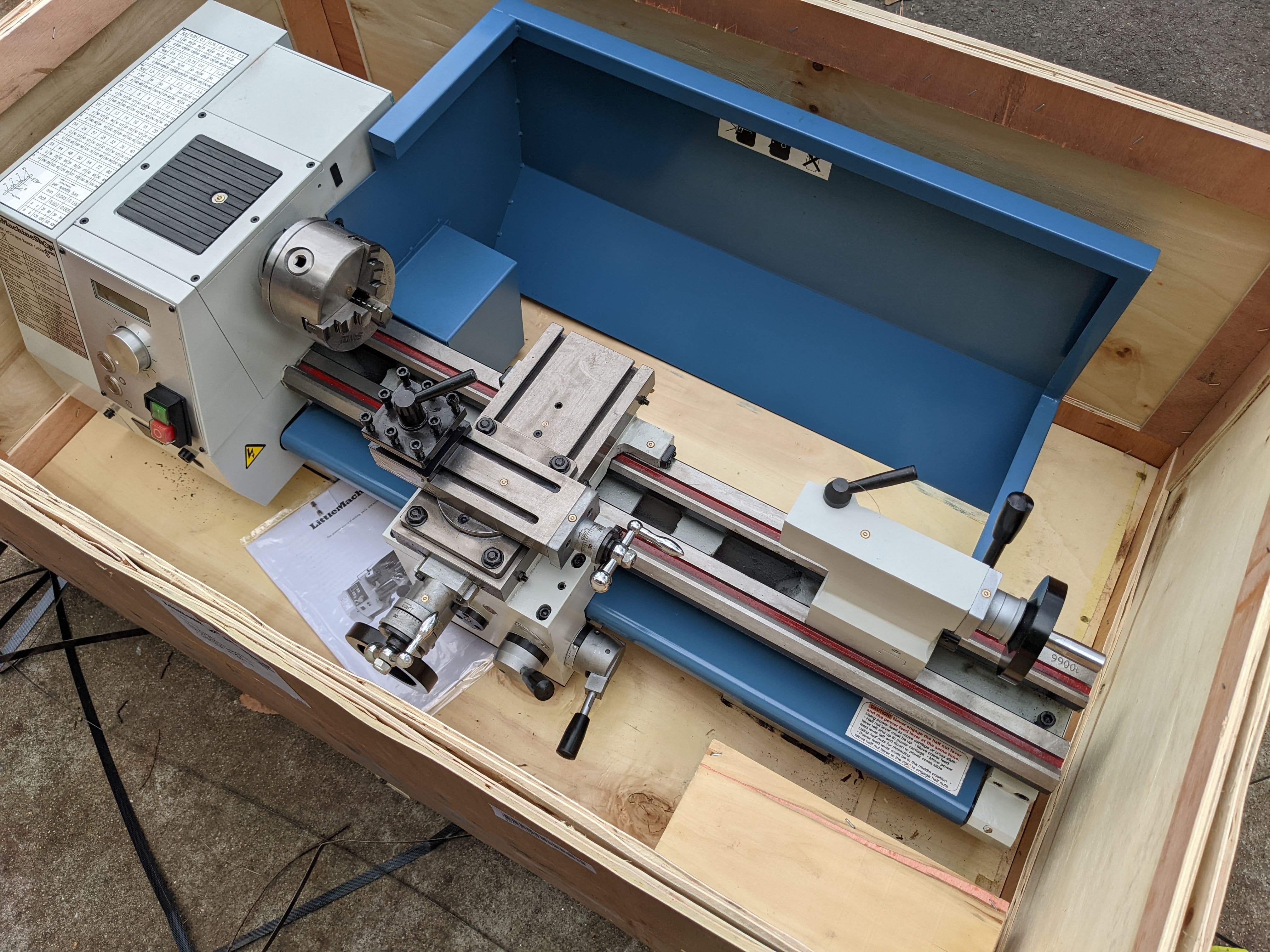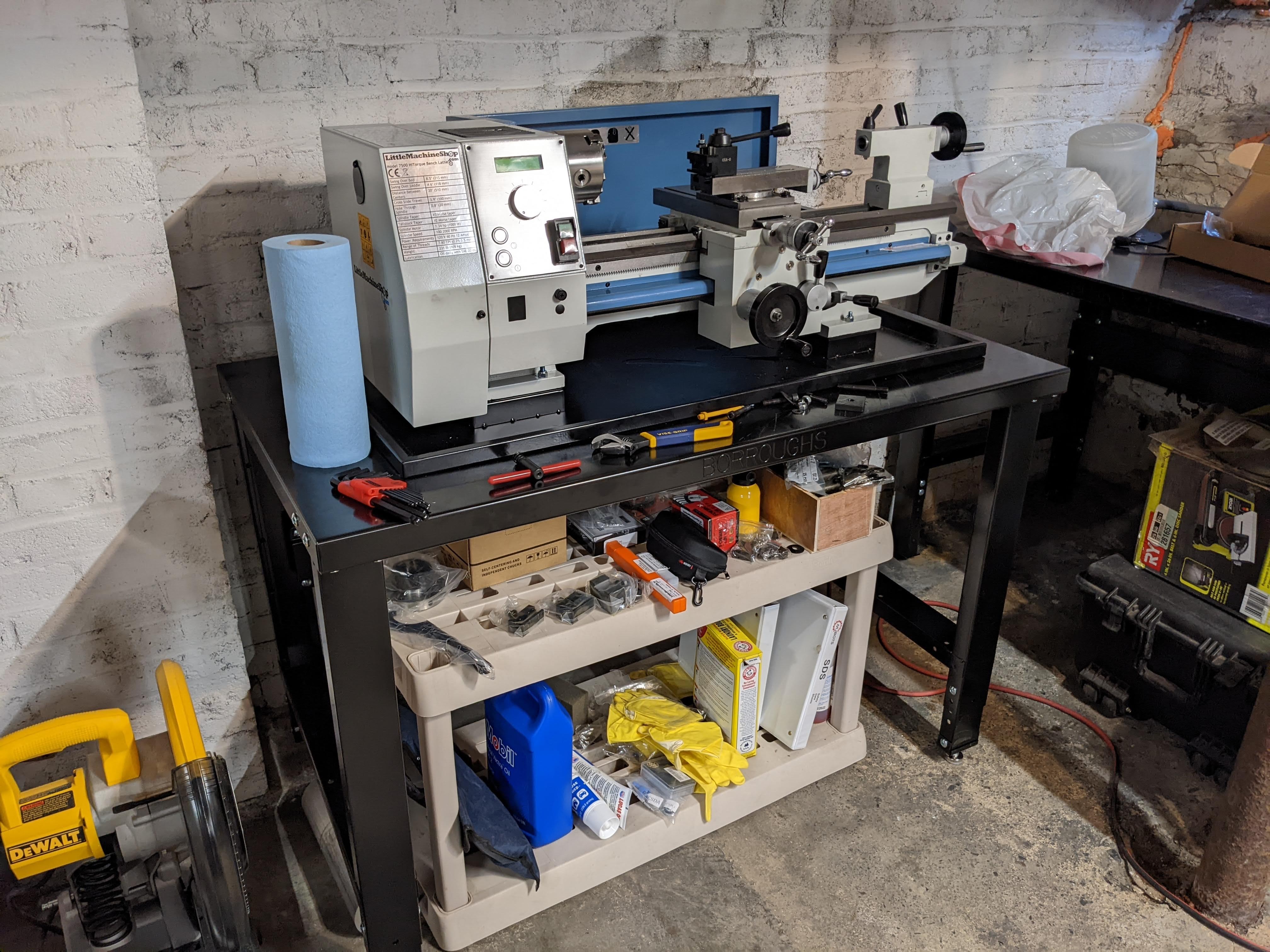Flexible I/O: Source configuration
In the last two posts (part 1, part 2), I started talking about the new, more flexible I/O subsystem for the open source moteus brushless motor controller. In this post, I’ll continue by describing what a “source” is, and how it is configured.
For reference, the block diagram showing how auxiliary ports, sources, and sinks are related is below:
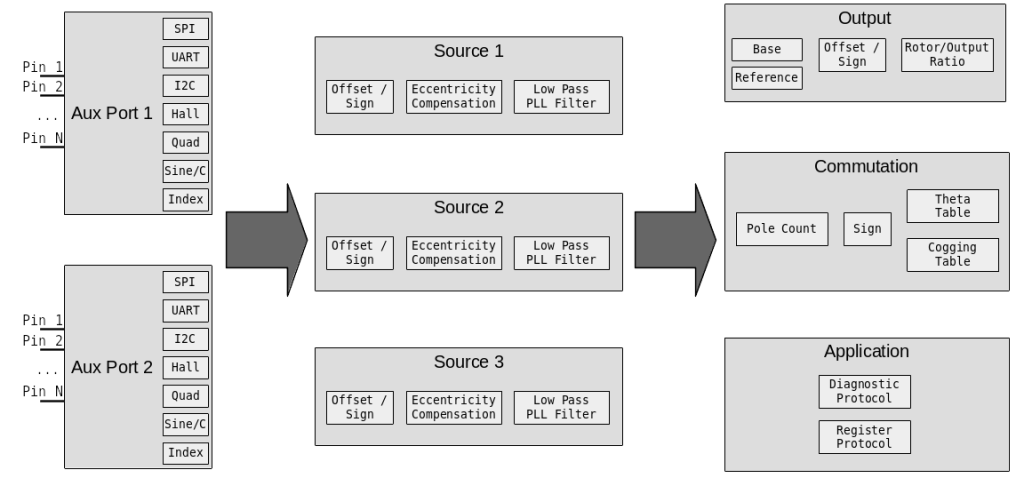
Each “source” in the above diagram represents a single encoder. To the sinks it provides a position and velocity, along with various validity indications for that data. Each has three basic configuration components: where to get the raw data, how to transform that raw data, and the low-pass filter configuration. We’ll cover each in turn.

